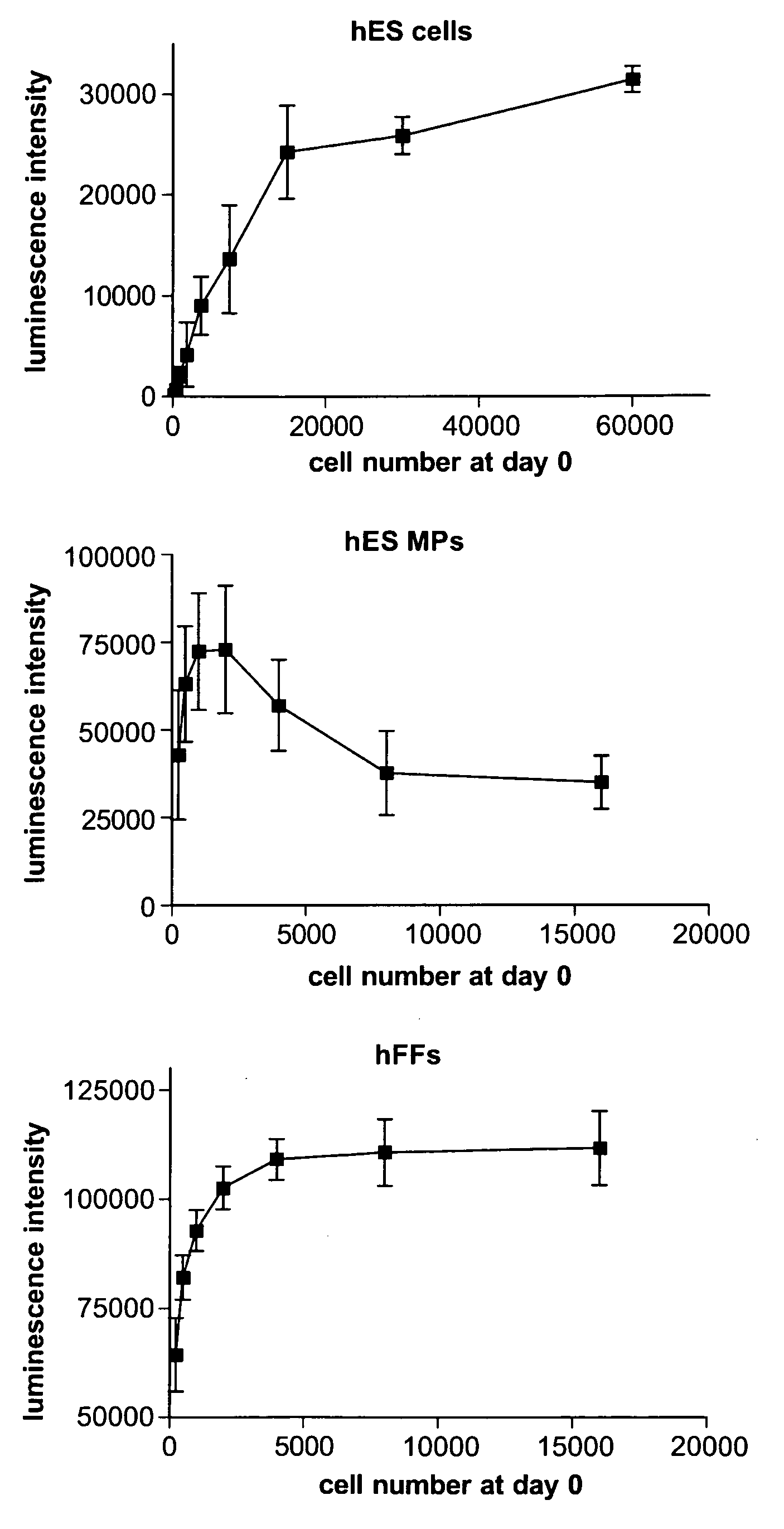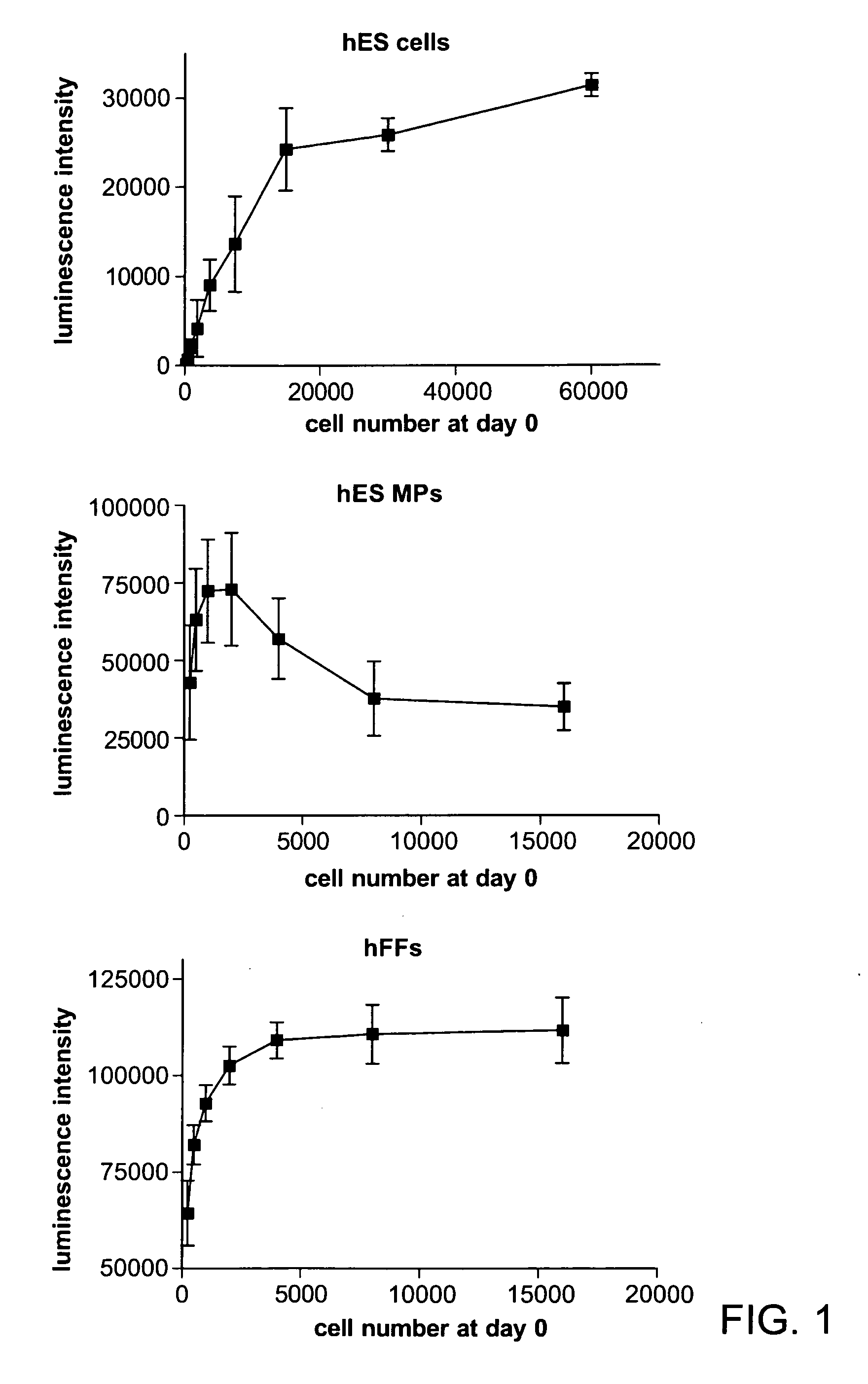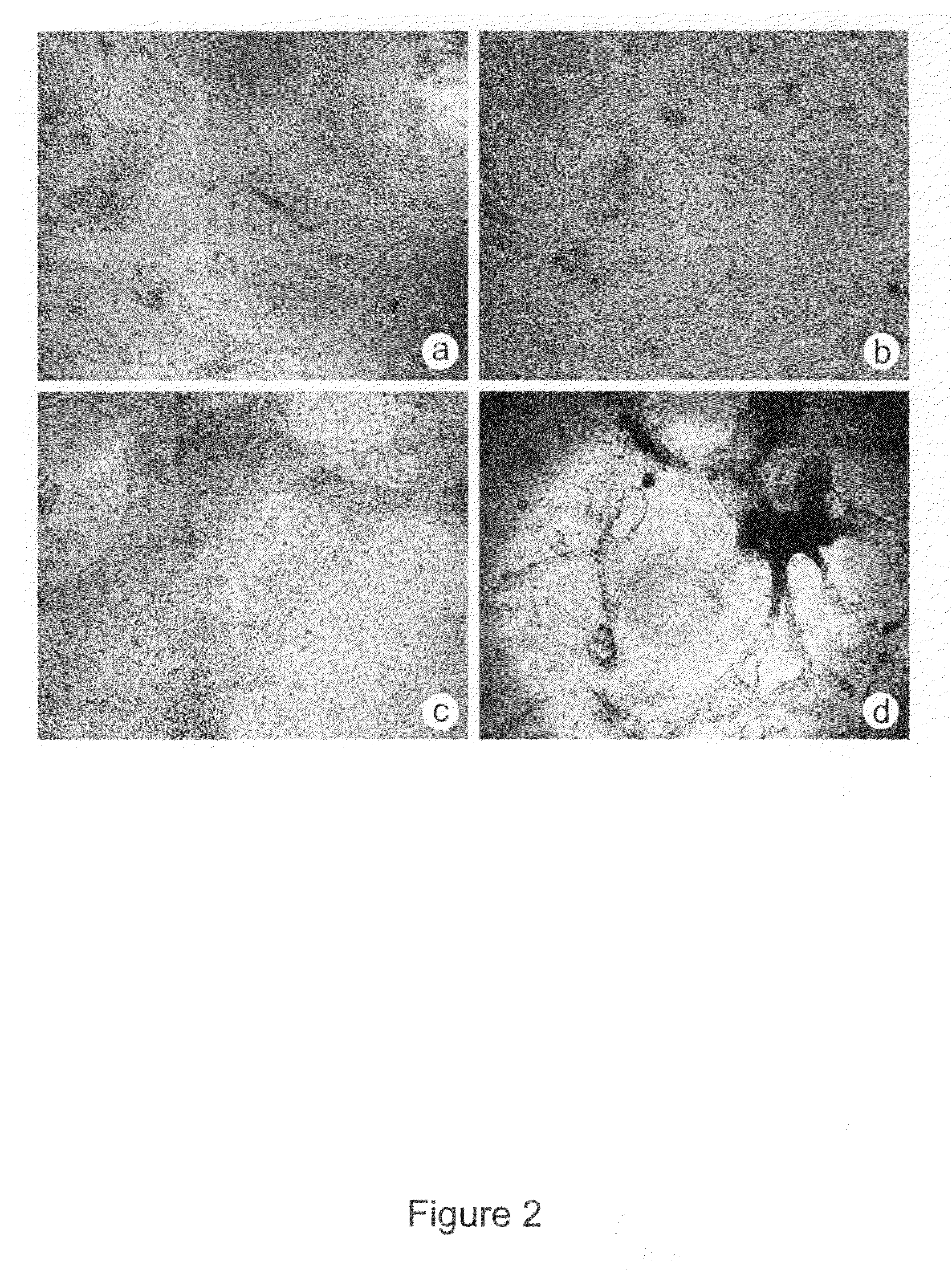Novel toxicity assay based on human blastocyst-derived stem cells and progenitor cells
- Summary
- Abstract
- Description
- Claims
- Application Information
AI Technical Summary
Benefits of technology
Problems solved by technology
Method used
Image
Examples
Example
Example 1
Culture of hBS Cells, Progenitor Cells and hFF Cells
[0067]The hBS cell lines SA002 and SA002.5 were established and characterised as described previously (Heins et al., 2004, WO03055992), and registered at NIH (http: / / stemcells.nih.gov / research / registry / cellartis.asp) and UK Stem Cell Bank (http: / / www.mrc.ac.uk / Utilities / Documentrecord / index.htm?d=MRC003259). The cell lines were maintained on mitomycin-C inactivated mouse embryonic fibroblasts (mEF) in VitroHES™ medium (Vitrolife, Kungsbacka, Sweden) supplemented with 4 ng / ml human recombinant basic fibroblast growth factor (bFGF) (Invitrogen, Carlsbad, Calif.). Undifferentiated hBS cells were passaged every 4-5 days by mechanical dissociation using the Swemed Stem Cell Tool (Swemed Lab International AB, Billdal, Sweden).
[0068]Fibroblast-like progenitor cells were generated by cutting out pieces of hBS cell colonies in 200×200 μm pieces and placing of the pieces in Petri dishes for aggregation in a medium based of KO-DMEM, ...
Example
Example 2
Proliferation
[0078]In order to determine the optimal cell number to be seeded per well in a 10 day toxicity test a set of proliferation tests was performed. The optimal cell number for seeding has to be in the range where the seeded number of cells is proportional to the signal at the reading day of the test. hFFs, hBS MPs and hBS cells were seeded as triplicates in DMEM supplemented with 10% FBS and 50 U / ml Penicillin / Streptomycin (all Invitrogen) into gelatine (Sigma) coated 96-well plates in a 2-fold dilution series with the highest cell density being 16.000 cells / well for hFF and hBS MPs seeded as single cell suspension and 60.000 cells / well for hBS cells seeded in aggregates of 50 to 100 cells. The plates with hBSC were centrifuged for 5 min at 400 g immediately after cell seeding in order to support the reproducible attachment of the hBS cell aggregates. Culture medium was renewed on day 4 and day 7. On day 10 the intracellular ATP content in the individual wells was ...
Example
Example 3
Cytotoxicity Testing
[0080]hBS cell colonies were dissociated into small aggregates of ca. 50 to 100 cells and seeded into gelatine coated 96-well plates (Nunc, Kamstrupvej, Denmark) in 100 Ml Test medium containing Knock Out DMEM supplemented with 20% FBS, 1% penicillin-streptomycin, 1% Glutamax, 0.5 mmol / l N-mercaptoethanol and 1% non-essential amino acids (all from Invitrogen) at a density of 5000 cells / well. hBS MPs and hFF cells were dissociated into single cells and seeded into gelatine coated 96-well plates (Nunc) in 100 Ml test medium at a density of 500 cells / well. The plates with hBSC were centrifuged directly after seeding for 5 min at 400 g.
[0081]Progenitor cells and hFF cells were dissociated into single cells and seeded into 96-well plates in 100 μl test medium.
[0082]After 24 hours the Cytotoxicity test was started by adding 100 μl toxicity solution to the test wells that had twice the concentration as the required end concentration (day 0). Toxicity medium was...
PUM
| Property | Measurement | Unit |
|---|---|---|
| Time | aaaaa | aaaaa |
| Time | aaaaa | aaaaa |
| Time | aaaaa | aaaaa |
Abstract
Description
Claims
Application Information
 Login to View More
Login to View More - R&D
- Intellectual Property
- Life Sciences
- Materials
- Tech Scout
- Unparalleled Data Quality
- Higher Quality Content
- 60% Fewer Hallucinations
Browse by: Latest US Patents, China's latest patents, Technical Efficacy Thesaurus, Application Domain, Technology Topic, Popular Technical Reports.
© 2025 PatSnap. All rights reserved.Legal|Privacy policy|Modern Slavery Act Transparency Statement|Sitemap|About US| Contact US: help@patsnap.com



